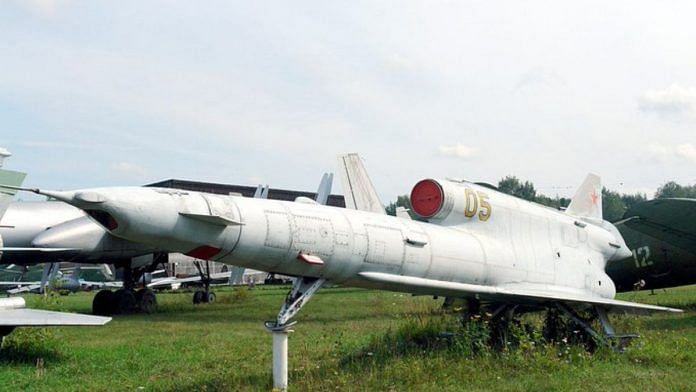New Delhi: Conflict and war are replete with stories of double agents — individuals working as spies for both sides or all parties involved. But rarely have we heard of a weapons system built by one side being used by its opponent to attack.
This is precisely what is taking place with the Tupolev Tu-141 Strizh in the ongoing Ukraine-Russia war.
The Tupolev Tu-141 is a drone used in the 1980s for reconnaissance missions by the Soviet Air Force. Ukraine has now adapted the technology developed by the Soviets to attack Russia by transforming the reconnaissance drone into a cruise missile.
On 5 December, Ukraine struck Russian bases at Engels and Ryazan region. These strikes reportedly saw the usage of Tu-141 Strizh drones by Kyiv.
The Tupolev Tu-141 Strizh drone. The Tu-141 is capable of flying up to 1000km and is rumored to be used against the Russian airbases Engels-2 and Dyagilevo deep inside Russia. #Ukraine #Ryazan #Saratov #Russia pic.twitter.com/PlwXKNeM5R
— (((Tendar))) (@Tendar) December 13, 2022
Also read: China cyberwar: Beijing’s dominance in IoT & smart technology & vulnerabilities for India
Reconnaissance drone to cruise missile
Compared to standards in the 1980s, the Tu-141 was a simple drone. But it had a large enough surface area and the requisite speed to carry a warhead weighing hundreds of kilograms. Essentially, making it easier to convert the drone into a cruise missile.
It “should come as no surprise that the Ukrainians are sending their Tu-141s on one-way missions to blow up Russian bombers,” noted David Axe of Forbes.
But the Tu-141 has always had a Ukrainian connection. It was first developed in a Soviet manufacturing unit in Kharkiv in the 1970s.
When Crimea was attacked by Russia in 2014, Ukraine took out the Tu-141 drones from old warehouses and adapted them to attack the Russians. Reconnaissance cameras in the Tu-141 were removed and the Ukrainians fit-in missiles along with a warhead — converting it from a spy system to a weapon.
The Aviation Week explains that a central basis of this conversion would have been to replace the guidance mechanism of the unmanned aerial vehicle (UAV). It would now follow a preprogrammed navigational route set via satellite systems. Further, the flight path now included several turning points and alterations in altitudes.
According to news website TheDrive, from the very early days of the war, Kyiv has been using the Tu-141 to attack Russia. A missile that crashed in Croatia earlier this year was also reportedly the Tu-141, according to TheDrive.
Range, speed, height & payload
The Tu-141 reportedly has a flying range of 650 miles or roughly 1,000 km. It has a length of 14.44 metres, a wingspan of 2.88 metres and a height of 2.44 metres or 8 feet.
It reportedly weighs 5,37 kg, allowing it to carry a payload ranging between 500 and 1000 kg.
According to reports, it can reach transonic speeds of a maximum of 1,100 kmph. Given its ability to carry payloads, the drone can also take radars — apart from missiles and photographic equipment.
Further, it “takes off from a wheeled platform with the help of rocket accelerators,” said the Aviation Week.
Also read: Ishar Singh–first Sikh soldier to receive Victoria Cross for heroics in Waziristan



